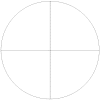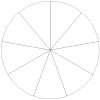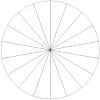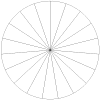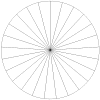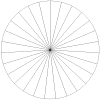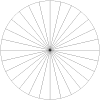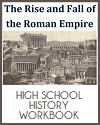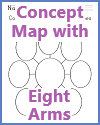- The most obvious usage for our pie charts is in teaching fractions in math class. Using a smart board, it is easy to illustrate to kids that 1/3 is the same as 3/9 by shading a pie chart.
- Try introducing the concept of fractions and pie charts by using the class (or family) as an example. Say that there are 27 students, a teacher, and a teacher's aide, for a grand total of 29 people working and learning in the classroom--the "class." Print the pie chart with 29 sections, then cut apart the pieces. Have each person write her/his name on a section, then reassemble the chart. Students will see that each person in the room is an integral part of the class. Later, you can expand upon this concept by illustrating that 2/29 are adult educators. Maybe 5/29 are members of the band, 8/29 play a musical instrument, 14/29 are male, etc.
- Have each student gather data from members of the classroom to create their own pie charts. Each student can conduct her/his own research and arrange it on a pie chart for classroom display. Possible research topics could include numbers of siblings (i.e., % are only children, % percent have one sibling, % have two siblings), how many Harry Potter books students have read, etc. This is a great activity because not only are students learning to use pie charts and fractions, but they are learning to conduct research and to present facts rather than opinions or conjectures. That is, a student who has read and enjoyed the Harry Potter books may assume that "everyone" either has or hasn't read them, or that "every" family serves cornbread at Thanksgiving, or that "all" kids hate green beans. The exercise can be a real eye-opener about the problems inherent in making assumptions based on biased observations and anecdotal evidence, flawed forms of logic which are at odds with the CCSS and scientific reasoning.
|



